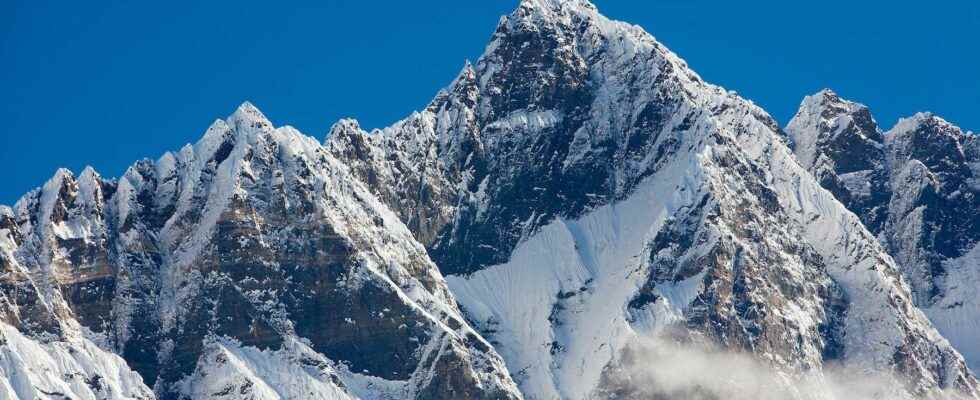Chinese scientists have discovered nearly 1,000 microbes, bacteria and viruses trapped in glaciers on the Tibetan Plateau. The melting of the ice will gradually release these micro-organisms which are several thousand years old.
the tibet plateau is considered the third pole with 46,000 glaciers: it includes the third largest concentration of ice of the world, after the North and South Poles. The surfaces of the glaciers are far from devoid of life, they contain a large number of different forms of life, such as bacteriaof the algaemushrooms or even archaea. These microorganisms play an important role in glacier ecology. It was in this environment that a team of Chinese scientists discovered 968 different species of microbes. These microbes live in extreme conditions: freezing temperatures, high levels of solar radiation, virtually no food sources. They have the ability to freeze and thaw depending on the temperatures. Chinese scientists are currently conducting a research projecttitled the “ catalog of genomes and Genoa of the Tibetan Glacier » (TG2G), which is destined to be supplemented by the discovery of new organisms as research progresses.
80% of Tibetan glaciers are melting
The Tibet Plateau, an area of 2.5 million square kilometres, is an important source of water supply for the Asian cities bordering it. The so-called “Asian water tower” is heating up three times faster than the global average. According to the World Meteorological Organization“ most of the Tibetan plateau experienced a decrease in snow days between 1980 and 2016, with an average decrease of less than 2 days/year over nearly half of the region, and more than 4 days/ year in some areas. Climate change has already caused 80% of the plateau’s glaciers to shrink.
Scientists believe that it is necessary to catalog the microbes of these glaciers in order to assess the consequences, and possible problems, with the melting ice, and therefore with the dispersion of these microbes. The team has already counted 3,241 genomes from 21 glaciers between 2016 and 2020. Some 82% of the genomes are new species, 11% of these species were found on the same glacier and 10% were found on all glaciers studied. These glaciers are true “recorders” of life in the past, since they trap 10,000 year old microbes which can come back to life when the conditions are right. In 2021, another study of Chinese scientists had identified 33 viruses (including 28 unknown) trapped in the Guliya ice shelf in Tibet. The age of some of these discovered viruses had been estimated at more than 15,000 years.
Microbes, viruses, carbon and methane are released by global warming
How germs, viruses, bacteria and mushrooms get locked in ice? According to the Chinese researchers, these viruses come mainly from plants and the soil in which they grew. Dust from this soil of 10,000 or 15,000 years ago has simply been trapped in the ice, as have large quantities of carbon and methane: 12 million tons of carbon would be locked up in the Tibetan ice. The melting of the ice linked to the global warming global therefore presents a multiple danger, already in progress: the dispersion in the atmosphere of these greenhouse gas which will again aggravate the warming, but also of these micro-organisms in the land and Tibetan waters.
Interested in what you just read?
